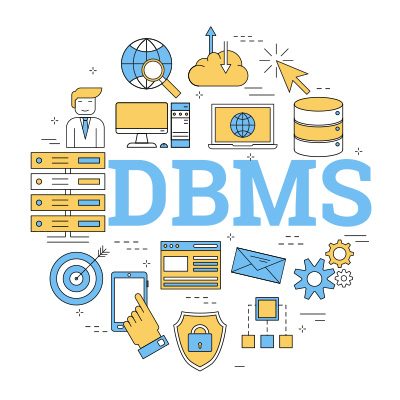
Introduction to Database Management
In the digital age, data has become one of the most valuable assets for businesses, organizations, and individuals alike. With the exponential growth of data, there’s an increasing need for effective ways to store, manage, and retrieve it. This is where database management comes into play. Database management involves the systematic handling of data through software solutions known as Database Management Systems (DBMS). In this article, we’ll dive into the key concepts, functions, types, and best practices of database management, highlighting its crucial role in today’s data-driven world.
What is Database Management?
Database management refers to the processes, tools, and techniques used to manage and manipulate data stored in a database. It involves ensuring that data is stored efficiently, is accessible when needed, and is protected from unauthorized access. Proper database management is vital for any business that relies on large amounts of data—whether for operations, decision-making, or analytics.
Importance of Database Management
Effective database management provides several benefits:
- Efficiency: It ensures data is organized and accessible, reducing redundancy and improving speed.
- Security: Proper management ensures that sensitive data is protected against unauthorized access and data breaches.
- Scalability: It allows databases to grow as the organization’s data needs expand without performance issues.
- Data Integrity: Ensures that data remains accurate, consistent, and reliable.
Key Components of Database Management
Database management involves several key components:
- DBMS (Database Management System): The software that manages databases.
- Data Models: The logical structures that define the organization and relationships of data.
- Data Security: Measures to protect data from loss or unauthorized access.
- Backup and Recovery: Ensuring data is backed up regularly and can be restored in case of a failure.
Types of Databases
There are several types of databases, each serving different use cases. The choice of database depends on the type of data and the needs of the business.
Relational Databases
Relational databases store data in tables with rows and columns, where each row represents a record and each column represents an attribute. These databases use Structured Query Language (SQL) for querying and managing data. Examples include MySQL, PostgreSQL, and Oracle.
NoSQL Databases
NoSQL databases are designed for handling unstructured or semi-structured data. They are more flexible than relational databases and can scale horizontally. These databases are often used in big data applications, real-time web apps, and applications requiring high scalability. Examples include MongoDB, Cassandra, and Couchbase.
Distributed Databases
Distributed databases store data across multiple locations or servers, ensuring that data is replicated and accessible from various points. This helps improve performance and availability, especially for large-scale applications that serve users from different geographical locations.
Database Management Systems (DBMS)
A Database Management System (DBMS) is software that helps users define, create, manage, and interact with databases. DBMS software acts as an interface between users, applications, and the database, allowing users to perform various operations such as querying, updating, and deleting data.
What is a DBMS?
A DBMS allows organizations to efficiently store and manage their data. It offers various tools for querying, reporting, and ensuring the integrity and security of the data.
Types of DBMS
Different DBMSs are designed for different data management needs. Here are the four major types of DBMS:
Hierarchical DBMS
This type of DBMS organizes data in a tree-like structure with parent-child relationships. It is suitable for applications with a clear, hierarchical relationship between data elements.
Network DBMS
Network DBMS allows more complex relationships between data entities. It uses a graph structure, where records can have multiple relationships, making it more flexible than hierarchical DBMS.
Relational DBMS
Relational DBMSs (RDBMS) organize data into tables and use SQL for querying. RDBMSs are the most common type of DBMS and are widely used in business applications. Examples include MySQL, PostgreSQL, and Microsoft SQL Server.
Object-Oriented DBMS
Object-Oriented DBMSs store data in the form of objects, similar to how object-oriented programming works. These databases are designed for complex data structures and are often used in applications that require high performance and complex data handling.
Key Functions of Database Management
Effective the softwarepoint.com involves a variety of functions designed to optimize the storage, retrieval, and maintenance of data.
Data Storage
The DBMS ensures that data is stored in a structured and efficient manner. It uses different storage mechanisms and file structures to organize and store data on disk.
Data Retrieval
Data retrieval involves querying the database to extract useful information. DBMSs provide powerful querying languages, like SQL, to enable users to request data based on specific criteria.
Data Manipulation
Data manipulation refers to the ability to insert, update, or delete data in the database. DBMSs provide mechanisms to perform these operations while ensuring data consistency and integrity.
Data Security and Integrity
Security is a major concern in database management. DBMSs implement access controls, encryption, and user authentication to protect data from unauthorized access. Integrity constraints are also applied to ensure the accuracy and consistency of data.
Data Backup and Recovery
Regular backups are crucial for ensuring that data can be recovered in the event of a failure or disaster. DBMSs typically include automated backup and recovery solutions to ensure business continuity.
Database Design and Architecture
Designing a database effectively is a critical step in ensuring its performance and scalability. A well-designed database enables efficient data retrieval, modification, and management.
Normalization
Normalization is the process of organizing data to minimize redundancy and dependency. It involves dividing a database into smaller, related tables and ensuring data is stored in the most efficient way.
Entity-Relationship Models
An entity-relationship (ER) model is a visual representation of the database structure, showing the relationships between entities (objects) and attributes. ER diagrams help in designing and understanding the database schema.
Indexing
Indexing improves data retrieval performance by creating an index for frequently queried fields. Indexes help speed up the search process by reducing the number of records the DBMS needs to scan.
Database Management Best Practices
To ensure the long-term success of your database, it’s important to follow industry best practices in database management.
Optimize Performance
Optimizing database performance involves fine-tuning queries, indexing, and database configurations to ensure fast response times and efficient resource usage.
Ensure Data Security
Data security is paramount. Employ encryption, access control, and regular audits to protect your data from unauthorized access and breaches.
Regular Backup and Recovery Plan
Make sure to establish a reliable backup schedule and a disaster recovery plan. Regularly backing up your database helps minimize the risk of data loss.
Keep Software Up-to-date
Keep your DBMS and database-related software updated to ensure that you’re protected against known vulnerabilities and enjoy the latest features and improvements.
Challenges in Database Management
Despite its importance, database management comes with challenges that organizations need to address.
Scalability Issues
As data grows, databases must scale to handle increased load. Poorly designed databases can face performance degradation as they scale, requiring constant optimization.
Data Redundancy and Inconsistency
Data redundancy (duplicate data) and inconsistency (data conflicts) can arise when the database is not properly normalized or when multiple copies of data are maintained.
Security Risks
Hackers and malicious actors pose a constant threat to database security. Regular security updates and access controls are critical to mitigating these risks.
Complexity of Database Integration
Integrating data from different sources or across different systems can be complex, especially if there are inconsistencies or incompatibilities between the systems.
The Future of Database Management
The future of database management is filled with exciting developments that are transforming how we store, manage, and interact with data.
Cloud Databases
Cloud-based databases are becoming increasingly popular, offering flexibility, scalability, and lower infrastructure costs. Providers like AWS, Google Cloud, and Microsoft Azure provide cloud database solutions that are secure and easily scalable.
Machine Learning and Databases
Machine learning algorithms can be integrated with databases to help automate data management tasks, detect anomalies, and improve decision-making based on data insights.
Conclusion
Database management is a critical aspect of modern business operations, ensuring that data is efficiently stored, retrieved, and protected. By understanding the various types of databases, DBMSs, and best practices, businesses can create robust, scalable data solutions that support growth and innovation. The field is continuously evolving with new technologies, making it an exciting area to explore and innovate.








